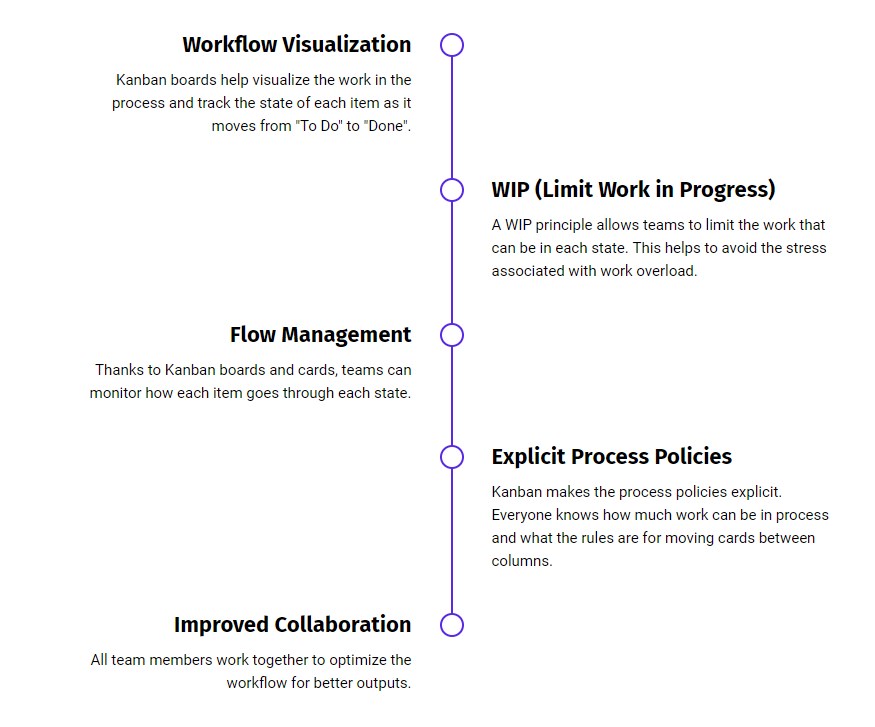Introduction
By now you’ve probably heard of Agile methodology and building software products in small pieces, so developers can get real feedback along the way and mend it once needed.
Kanban and Scrum are by far the most popular Agile frameworks used by development teams all over the world. Some prefer Kanban and others are stoked on Scrum. Moreover, some teams are getting the best of both worlds by combining techniques from Kanban and Scrum by using either so-called Scruban or their own original framework.
When there are several options, it’s hard to pick the right one. But when it comes to choosing between Kanban and Scrum, the mission is impossible. Which one is better? Or should we compare them? Confusion is spreading. Let’s have a look at Kanban and Scrum to sort out all those questions.

Enter Scrum
Scrum is one of the most used Agile frameworks. It’s often called a process framework because it describes a flexible management framework that allows fitting daily development practices. In fact, Scrum doesn’t have any development practices, it leaves everything up to you to decide and organize the work of your development team.
According to Scrum, teams batch their work into sprints, fixed timeboxes that usually last around two weeks. Sprints can be 1-4 weeks long.
You can find more useful information about Scrum in our previous article.
Where Scrum Works and Where It Doesn’t
As Scrum is a turnkey project management framework, it’s great for teams to put Agile to the test. Scrum works well with projects where requirements are rapidly changing. Thanks to its unmatched flexibility, Scrum provides a large amount of latitude to tweak the process to fit the project’s requirements as well as the team’s culture.
However, Scrum has both benefits and downsides. A key downside stems from the fact that’s not recommended to change the directions one a sprint has started. This implies that teams should wait until the sprint ends (approximately two weeks) before they can shift the focus or priorities. Anyway, it allows one to alternate projects quicker than many non-Agile teams can even respond. Such a delay may be regarded as a “cooling off” period since lots of right-now changes, that are critical at this moment, become less important or even futile after some time passes.
Scrum isn’t the best process framework for teams whose priorities can change daily. In this case, a two-week period is simply out of the question.

Enter Kanban
Kanban is similar to Scrum. It’s also a flow-based methodology that allows reprioritization of upcoming work. Using Kanban, development teams can respond to changes more quickly. Frankly speaking, Kanban is simpler than Scrum. It’s based on five simple principles:

Where Kanban Works and Where It Doesn’t
The biggest advantage of Kanban is its simplicity and ease of use. It’s incredibly easy to understand and start using it. Kanban is a super flexible process framework. Thanks to its unmatched flexibility, Kanban can be easily integrated into existing processes without any delay.
Kanban doesn’t have any prescribed sprints like Scrum. It means that this framework can be used even if the project requires rapid changes. All in all, Kanban allows teams to react faster than the Scrum world.
However, Kanban’s flexibility may become not only its biggest advantage but also its major disadvantage. Its flexibility and simplicity may “throw a wobbly” especially when it comes to rapid changes. The ability to change priorities at a moment’s notice can lead to thrashing on teams, and thus it should be handled with care.
Unlike Scrum, Kanban doesn’t provide a turnkey process framework. Kanban comes out like a blank slate from which to start. And it may become a challenge for teams that don’t have any processes and workflows. Teams that are entirely new to Agile may not know how and where to start with Kanban.
Who Wins? Kanban or Scrum?
There’s no clear winner. Scrum can be a good fit for teams that are just shifting to Agile. It can help build a more structured and streamlined process. Scrum can show how to break down projects into smaller sprints or what roles each team player has.
On the one hand, Scrum works well with development teams focused on a new product though there still may be some changes; as a rule, they don’t appear every day. The length of a sprint (about two weeks) is more than enough for teams to respond to changes.
On the other hand, Kanban is a good choice if teams have a highly functioning process that would fail if Scrum is implemented. So Kanban is worth a look if your teams have a mature process but are looking for new ways to handle it.
Agile has lots of forms. Kanban and Scrum are only two of them. Regardless of an Agile approach, few teams stay with a “pure Scrum” or a “pure Kanaban” framework. Instead, teams tend to bring useful elements from other Agile frameworks and create a method that works best for their culture and organization.
Summary
At IDAP, we’ve also defined our own mix that helps our development team streamline and optimize the processes. Instead of choosing one method and working within it, we’ve tested dozens of ideas and created a process that works best for both our employees and clients.



